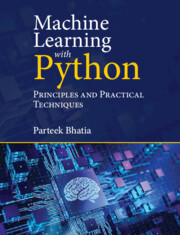Refine search
Actions for selected content:
48581 results in Computer Science
Extropy-based dynamic cumulative residual inaccuracy measure: properties and applications
- Part of
-
- Journal:
- Probability in the Engineering and Informational Sciences / Volume 39 / Issue 4 / October 2025
- Published online by Cambridge University Press:
- 26 February 2025, pp. 461-485
-
- Article
-
- You have access
- Open access
- HTML
- Export citation
Recursive subtyping for all
- Part of
-
- Journal:
- Journal of Functional Programming / Volume 35 / 2025
- Published online by Cambridge University Press:
- 26 February 2025, e8
-
- Article
-
- You have access
- Open access
- HTML
- Export citation
A GENUINELY UNTYPED EXPLANATION OF COMMON BELIEF AND KNOWLEDGE
- Part of
-
- Journal:
- The Review of Symbolic Logic / Volume 18 / Issue 1 / March 2025
- Published online by Cambridge University Press:
- 25 February 2025, pp. 160-185
- Print publication:
- March 2025
-
- Article
-
- You have access
- Open access
- HTML
- Export citation
Some generalized information and divergence generating functions: properties, estimation, validation, and applications
- Part of
-
- Journal:
- Probability in the Engineering and Informational Sciences / Volume 39 / Issue 3 / July 2025
- Published online by Cambridge University Press:
- 25 February 2025, pp. 397-430
-
- Article
-
- You have access
- Open access
- HTML
- Export citation
Reliability analysis of a K-out-of-N system with random rate of repair
-
- Journal:
- Probability in the Engineering and Informational Sciences / Volume 39 / Issue 3 / July 2025
- Published online by Cambridge University Press:
- 25 February 2025, pp. 431-460
-
- Article
-
- You have access
- Open access
- HTML
- Export citation
When forecasting and foresight meet data and innovation: toward a taxonomy of anticipatory methods for migration policy
- Part of
-
- Journal:
- Data & Policy / Volume 7 / 2025
- Published online by Cambridge University Press:
- 25 February 2025, e24
-
- Article
-
- You have access
- Open access
- HTML
- Export citation
AI-driven design exploration: Utilizing brand logos as an inspiration source for architectural design
-
- Article
-
- You have access
- Open access
- HTML
- Export citation
Crisis-prompted online language teaching: a qualitative inquiry into autonomy among teachers in refugee settings
-
- Article
-
- You have access
- Open access
- HTML
- Export citation
Kinematic design and analysis of a novel overconstraint walking mechanism
-
- Article
-
- You have access
- Open access
- HTML
- Export citation

Machine Learning with Python
- Principles and Practical Techniques
-
- Published online:
- 22 February 2025
- Print publication:
- 30 November 2025
-
- Textbook
- Export citation
The number of overlapping customers in Erlang-A queues: an asymptotic approach
-
- Journal:
- Probability in the Engineering and Informational Sciences / Volume 39 / Issue 3 / July 2025
- Published online by Cambridge University Press:
- 21 February 2025, pp. 344-369
-
- Article
-
- You have access
- Open access
- HTML
- Export citation
Active learning for regression in engineering populations: a risk-informed approach
-
- Journal:
- Data-Centric Engineering / Volume 6 / 2025
- Published online by Cambridge University Press:
- 21 February 2025, e16
-
- Article
-
- You have access
- Open access
- HTML
- Export citation
A negative charge at position D+5 of Motif A is critical for function of the major facilitator superfamily multidrug/H+ antiporter MdtM’ – RETRACTION
-
- Journal:
- Experimental Results / Volume 4 / 2023
- Published online by Cambridge University Press:
- 21 February 2025, e21
-
- Article
-
- You have access
- Open access
- HTML
- Export citation
Interacting with ChatGPT in essay writing: A study of L2 learners’ task motivation
-
- Article
-
- You have access
- Open access
- HTML
- Export citation
Graph connectivity with fixed endpoints in the random-connection model
- Part of
-
- Journal:
- Probability in the Engineering and Informational Sciences / Volume 39 / Issue 3 / July 2025
- Published online by Cambridge University Press:
- 21 February 2025, pp. 370-396
-
- Article
-
- You have access
- Open access
- HTML
- Export citation
Competition between protons and substrate for binding to the major facilitator superfamily multidrug/H+ antiporter MdtM’ – RETRACTION
-
- Journal:
- Experimental Results / Volume 4 / 2023
- Published online by Cambridge University Press:
- 21 February 2025, e20
-
- Article
-
- You have access
- Open access
- HTML
- Export citation
Count on Me: Moral Language in Social Media and Policy Discourse during the Ukraine-Russia Conflict
-
- Journal:
- Data & Policy / Volume 7 / 2025
- Published online by Cambridge University Press:
- 21 February 2025, e22
-
- Article
-
- You have access
- Open access
- HTML
- Export citation

















